Expect a lot more buses on Portland roads and freeways as Amtrak grapples with an unexpected service disruption. The operator of the Amtrak Cascades line between Oregon and Washington announced Wednesday they’ve removed all but one of their trainsets because a routine inspection revealed a high level of corrosion.
The corrosion is related to the age of the Horizon trainsets and has resulted in a total of 70 cars across the country being taken out of service. 26 of those are on the Amtrak Cascades line. “This leaves just one non-Horizon trainset in service on Amtrak Cascades,” reads a statement posted by Amtrak. “This affects nearly all trips on Amtrak Cascades daily service to 18 stations between Vancouver, British Columbia and Eugene, Oregon.”
Buses will be used in the short-term through March 30th for all trips except those served by train numbers 503 and 508 between Seattle and Eugene (providing only one remaining daily roundtrip). Amtrak is working with bus providers for longer-term service but that’s still up in the air.
The aging Horizon trains will need to be replaced and Amtrak says they’ll try to redistribute trains from its nationwide fleet to fill the gap until new trains come online. They’ve already got an order for a new fleet of trains, but those are expected to arrive until 2026. According to the latest update provided by ODOT, four new “Amfleet” cars (two coaches and two dinette cars) are on the way to Seattle and are expected to begin operations on the Cascade line the first week of April.
This is really bad news for Amtrak’s service along the I-5 corridor. And it comes as the Cascades line has shown a strong increase in ridership and amid growing political momentum in Oregon for rail travel. Amtrak set an all-time ridership record last year and launched two new daily trips on the Cascades line, bringing the number of daily roundtrips between Seattle and Portland to seven.
The Oregon Legislature passed a bill in 2024 calling on Metro to study the use of existing heavy rail assets for passenger rail in the Portland metro area. A bill in the legislature this session (SB 753/HB 3233) directs the Oregon Department of Transportation to work with transportation agencies in Washington and British Columbia to develop plans to operate and fun rail transportation. A bill in the Oregon Senate (SB 689) seeks to create a new agency, the Oregon Rail Department, to take over rail operations from ODOT. Other bills seek to expand TriMet’s WES service and create a task force on high speed rail.
But now all hands are on deck to solve this current service crisis. Amtrak says they are meeting with ODOT and WSDOT officials twice a day as they work to restore service and fully understand the cost and operational impacts of this disruption.

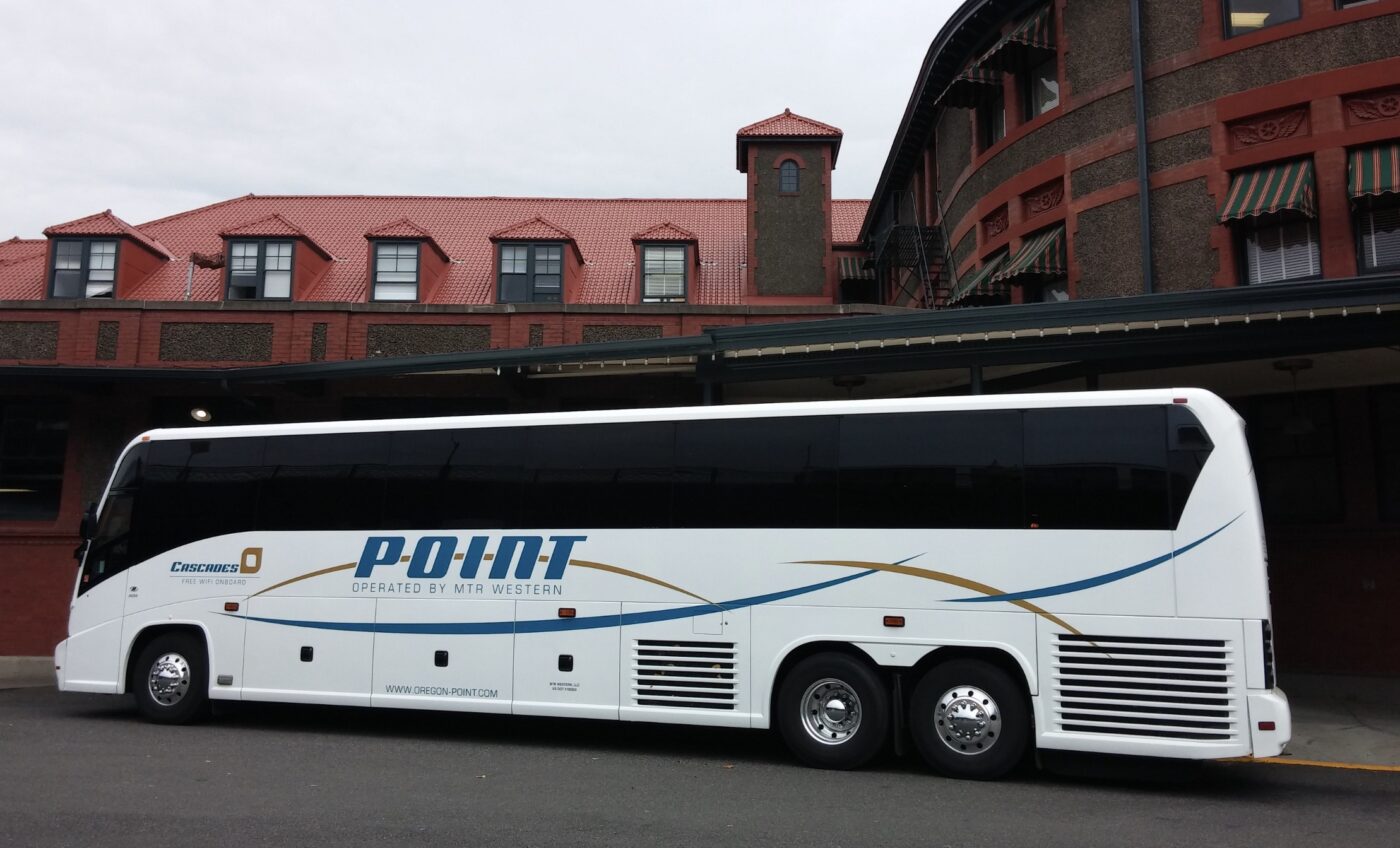
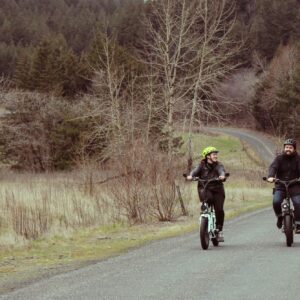
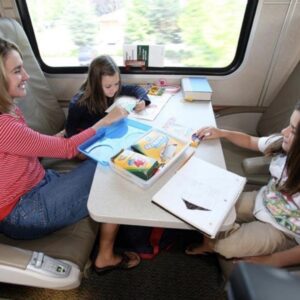
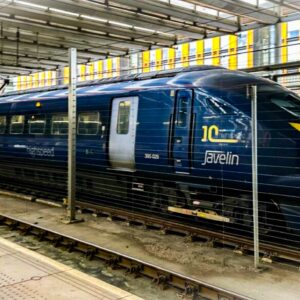
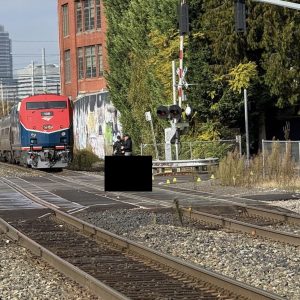
Thanks for reading.
BikePortland has served this community with independent community journalism since 2005. We rely on subscriptions from readers like you to survive. Your financial support is vital in keeping this valuable resource alive and well.
Please subscribe today to strengthen and expand our work.
If the leased buses are going to overflow out of the station lot and into the blank stretch of sidewalk NW of the train depot that serves as Portland’s bus station then it is high time we put some shelters and better signs out there.
The other Talgo trains would still be here if only WSDOT had properly tested the bypass route before late 2017 with the Talgo trains.
I’m really curious about this, and whether the Talgo trains were partially scapegoated for the derailment on the new bypass.
They absolutely were. US regulators want traincars built like tanks, because we have lacked the safety systems to keep trains from crashing into each other, or derailing due to overspeed. Now that we have Positive Train Control on this corridor, the odds of a crash are significantly lower, meaning we should consider relaxing the buff strength requirements that have been in place for decades.
The Talgo trains had a waiver for this buff strength requirement, but the NTSB identified it as a contributing factor in the crash, and recommended replacement of the trains. I feel that WSDOT wanted to shift blame, so the obvious decision was to remove them from service and replace them with these surplus Horizon cars. Amfleet cars will be fine in the short term, I guess. They are even older than the Horizon cars, but are stainless steel. The windows are tiny, though. I personally won’t be riding until they get the new Siemens trains next year.
thanks Chris I, just so I understand, did they see the buff strength requirement waiver as contributing to the crash, or the deaths/injuries that resulted? I would guess it was the latter..?
See page 29 on the accident report below. Their decision mainly came down to the crash performance of the Talgo. The unique rolling assembly design (that allows the train to tilt) and the high intensity of the crash, resulted in the very heavy wheel assembly penetrating one of the passenger cars. It seems that the NTSB felt this unique design resulted in too many of the cars decoupling.
https://www.google.com/url?sa=t&source=web&rct=j&opi=89978449&url=https://www.ntsb.gov/investigations/accidentreports/reports/rar1901.pdf
There have been similarly intensive crashes with standard railcars that lead to the wheel trucks separating from the carriages, but they generally fly clear of the carriage. I think the Talgo design places them in a location where they are more likely to pose a safety risk.
However, the Talgo trains have a lower center of gravity, meaning they are less likely to derail in the first place. Analysis performed by Talgo indicated that the leading engine tipped and left the tracks, pulling the rest of the train with it. The analysis estimated that the Talgo cars would not have left the tracks otherwise, even though they hit a 30mph curve at 60mph.
So I can understand why WSDOT made the decision they did, but I personally do not feel safer in a Horizon or Amfleet car. Train travel is much safer than driving to begin with. We keep passengers safe by preventing the crash in the first place, and the systems we have in place now would have prevented this crash.
thanks for posting the link to the report, Chris. I skipped around but it made for fascinating reading; clearly operator error, but what exactly what went wrong is unclear.
Question: Four of the older Talgo trainsets were decommissioned, but not the two that were built in Wisconsin. “Toots” and “Tootsie” (engineless driver cab nickname) still run the Cascades. Do these trainsets meet the (BSR) Buff Strength Requirement? If they do, I say Talgo trainsets should form the entire Cascades fleet as they are far more comfortable and faster.
The two Oregon owned sets are Talgo series VIII sets. These are fully FRA compliant, but we only have two sets, and one is currently being repaired after striking a large tree last winter.
http://web.talgoamerica.com/series8passengercars-overviewmenu
It looks like Amtrak has brought out a few Amfleet cars from the NE to handle the PDX to Seattle runs for the next year while they wait for the new trainsets to arrive.
https://www.theurbanist.org/2024/12/08/amtrak-cascades-on-track-to-deliver-new-airo-trainsets-in-2026/
This sucks. I’m guessing those busses won’t be able to transport bikes.
I think they can. Check with Amtrak. In their statement they said that customers with bike reservations would still be honored.
Bikes *are* allowed on busses, and they will honor those with bike passes.
when I’ve taken motorcoach buses like that in the past, they put your bike in the cargo area below. I’ve never had a problem, but could absolutely imagine problems for bigger bikes, more delicate race bikes, and fears of theft. That said, as someone who is car-free and has used many buses for bike tours, I have never had an issue.
The small silver lining is that if you’re a train nerd and want to ride the Talgo trainset, now’s the time.
I thought those had been taken out of service..?
This is really unexpected. I hope that we will see Amtrak negotiate a short-term lease with some West Coast Commuter Rail orgs (Seattle Sounder, CalTrain, SoCal’s Metrolink) to lease some passenger cars while the Venture Class is still being delivered. If Amtrak could lease some Bi-Levels Bombardier’s from CalTrain ahead of summer, that could double capacity in the short term.
I would be expecting the Horizon’s to not be repaired, at this point. Amtrak’s maintenance backlog is already pretty full.
Disappointing If we were like Europe, there would be an hourly train leaving Portland for SeaTac, Seattle and Vancouver BC
More like every 15 minutes during the day and 30 minutes at night, with hourly trains to Spokane, Boise, Bend, and Astoria, and high-speed 200 mph inter-city express trains to Chicago, SF, SLC, Denver, & LA.
Of your route proposals, Portland to Boise, SLC and Denver (the discontinued Amtrak Pioneer) may have most potential to happen, even so only with standard diesel locomotives. Typical 200mph HSR proposals become too expensive to build. Some mid-speed 130mph diesel locomotives can raise a pantograph to overhead wire where feasible or on separate route segments that can attain higher speed.
The Empire Builder from both Portland and Seattle combine coaches in Spokane around midnight then finish the Chicago run. A 2nd daily Empire Builder could run a more southern route through Billings and other more populated cities in Montana, thus avoiding the coupling in Spokane and at a some southern station form a transfer point to a bus to SLC.
I’ve been on the “Lewis & Clark Explorer” excursion to Astoria once. Great ride but track in disrepair. I’m not sure demand is there for daily service.
If we invested into passenger rail what we do for interstate highways, none of this would be issue, we would literally overcome any obstacle. But then we’d likely be a completely different country, wouldn’t we?
Your comments, D, are always thoughtful and commendable. The HSR Brightline (LA to LV) is for many miles routed in the median of a state highway. I believe the CAHSR project (LA to SF) should first extend north from Merced to Sacramento and along that extension similarly utilize a highway median from near Stockton to Fremont, shaving billions off the prohibitively expensive price tag AND serve more transit users.
It might also be worth considering where the money would come from — if folks are using trains, they’re (presumably) not buying as much gas, so tax receipts will be down, and what is left would probably be needed to maintain the highway system.
Would passengers pay to maintain the system, or would we just tax the billionaires?
I see your point, how would we actually pay for passenger rail? Europe generally has high gas tax rates coupled with national VAT rates of around 20%, which is similar to a sales tax. Given national opposition to income tax even after a century of it (1913) and the variation of local and state sales taxes (with 4-6 states opting to have no sales tax at all, including Oregon), a 20% VAT in the USA may be rather difficult to implement.
One option might be to stop subsidizing roadways in the USA and return to a pre-1900 transportation system of almost entirely private deregulated investment and control of transport (minus the horses). Let Americans pay the full costs of rail, road, and air transport and subsidize the movement of poor and vulnerable users as we already do. Basically let the markets decide which transport method will be the most efficient and when.
Since Americans are so opposed to a VAT, sales taxes, gas taxes, and income taxes, yet we need to get them to drive less for climate change purposes, why not make certain types of surface transport much more expensive? We can make our surface transportation system reflect true costs more market-efficient by not only removing federal highway subsidies, but also by taxing oil and vehicles from the source countries. Most cars these days are either imported into the USA or partly built with imported parts. Instead of charging a higher sales tax at the end-sale, why not get our trading partners to charge taxes every time a part or vehicle is exported to the USA? And our government can do the same as we import the same parts and cars, thus driving up the who cost of cars and SUVs. We can also tax fuel both as we import it and our trading partners can do the same at their end. Ultimately our consumers will pay for it all, but those who bike or use public transit will pay a lot less. The resulting income can then be used for climate-mitigating things and stuff.
Why not indeed? How? A carbon tax is the obvious solution, and you’ve seen how that idea has fared politically. A higher gas tax would only work to the extent Americans haven’t adopted EVs, and would be hugely unpopular.
Perhaps a general tax on cars and car parts, as you suggest? You may not have heard, because our president is not one to brag about his accomplishments, real or fictional, but we’re about to try that (probably). It will be interesting to see how that plays out. I think the chance of tariffs on autos lasting past infancy are low, but you never know. I predict the impact on VMT to be close to zero.
The Lewis & Clark Explorer has not run since 2004. The rail line from Wauna Paper Mill to Astoria has been abandoned and no longer in service since 2004. Because of landslides at Brownsmead the rails were damaged and removed and never replaced. Can we say Rails-to-Trails. We just need to figure out a connecting trail from St Helens to Wauna. HW 30 is not that bad to ride.
I don’t remember the year of my Astoria excursion trip, but it must’ve been a year or two before 2004 because I do remember bringing along a folding bike I had those years. I’d hope for rail restoration alongside a ped/bikeway like the Springwater Corridor in Portland. I’d still put the Astoria rail corridor lower on a long list of travel system concerns.
I’m not sure if the track gauge is the same, but what if TriMet loaned Amtrak their WES rolling stock, and temporarily replaced the WES service with buses? That would save TriMet a huge amount of money, and would let there be more train service on the longer route where the difference between train and bus is more pronounced.
WES is standard gauge, they run on P&W track.
The track width is the same for regular rail, TGV, freight rail, MAX, and Streetcar, but the thickness and hardness of the track and the depth of the ballast under the track varies a lot, freight rail needing the strongest rails and deepest ballast (often 13 feet deep). MAX trainsets are often delivered on regular train rails, but an oil train from North Dakota would crush a MAX line.
The entire WES fleet coupled together would maybe cover one of these trains.
More importantly, the engineers and conductors are trained on the route and the equipment. It would take time to train them on the WES operator cabs on this route.
Amtrak is bringing out a few spare Amfleet cars to fill in for the time being. These can be coupled to the existing Charger locomotives.
If there’s any future for rail travel in the state, then make sure TriMet does NOT have any dealings with running such assets. They’ve shown themselves to be a total failure at running Max trains or keeping the equipment properly maintained.
I’m not a big fan of TriMet, but they don’t have any license to operate outside this metro area anyway, do they?
If TriMet is broken as you say, where would you start fixing it? Is it the stinking fish problem, rotting from the head down, or a wider structural thing?
Not sure where this comment is coming from? TriMet is already replacing it’s first fleet or light rail cars and the new ones are actually quite fabulous. The rest of the light rail fleet seems to be in decent condition. The problems I notice are due to bad behavior by some riders who leave messes, including biohazards, on the train.
Since we are talk’in rail service to Portland…do “they” really think that HSR will reach the Portland Union Station thru Linton? That seems problematic vs a north or east station location? (Right?)
Plus the station is up for sale…to the private sector. https://railroad.net/amtrak-portland-oregon-union-station-condition-sale-etc-t177421.html
I just learned that Amtrak has brought in extra train cars from elsewhere, and is back to running all the normal Cascades trains at half capacity.